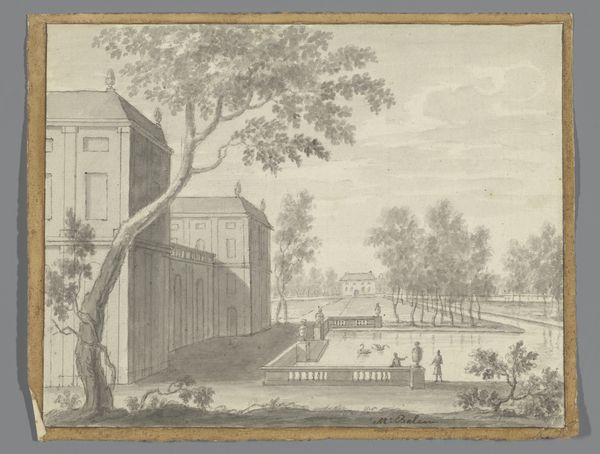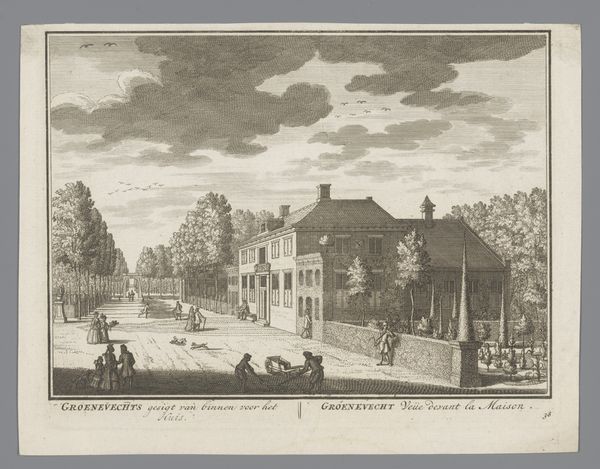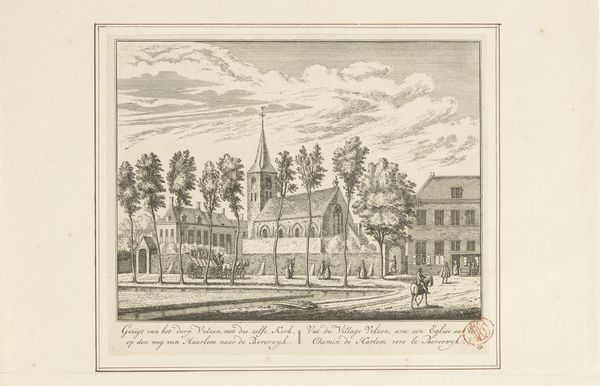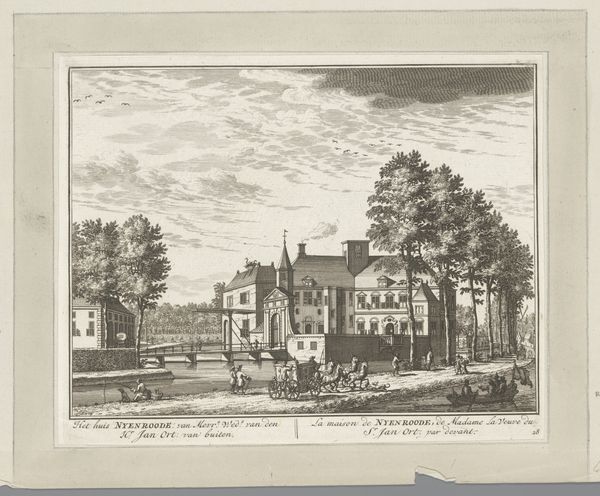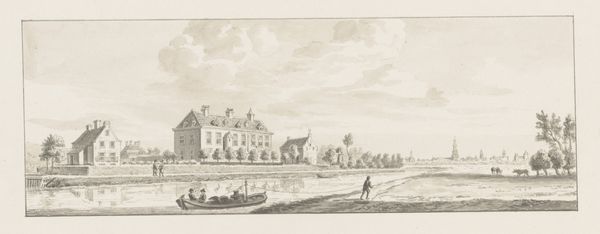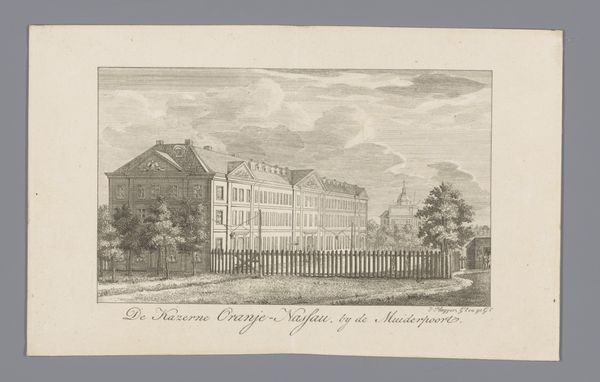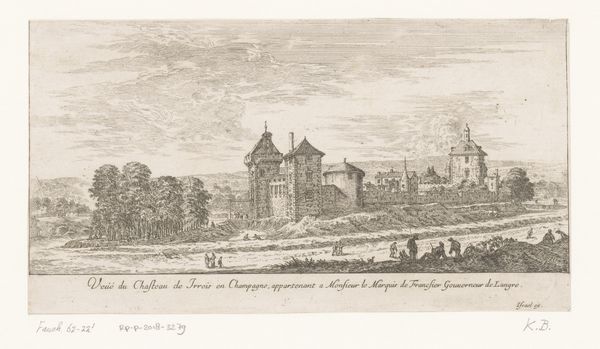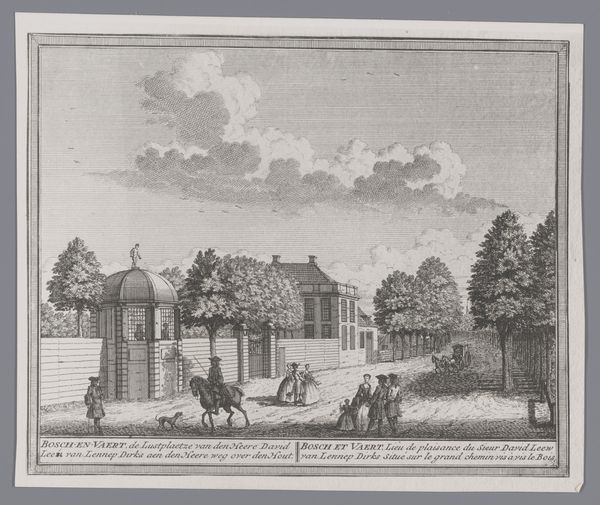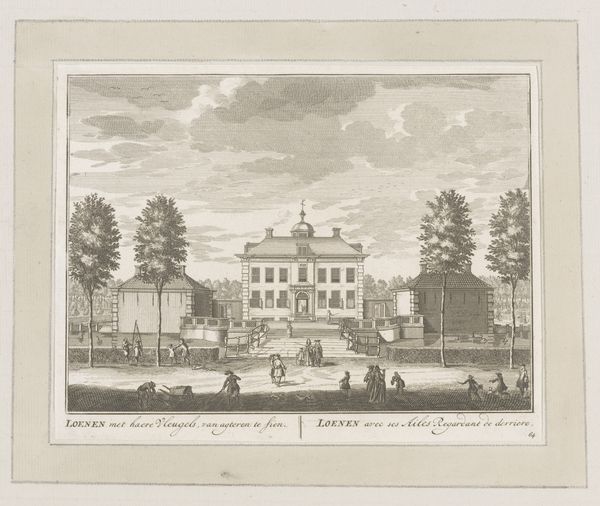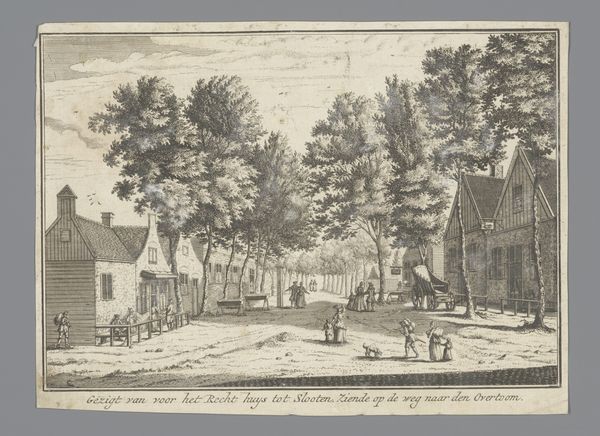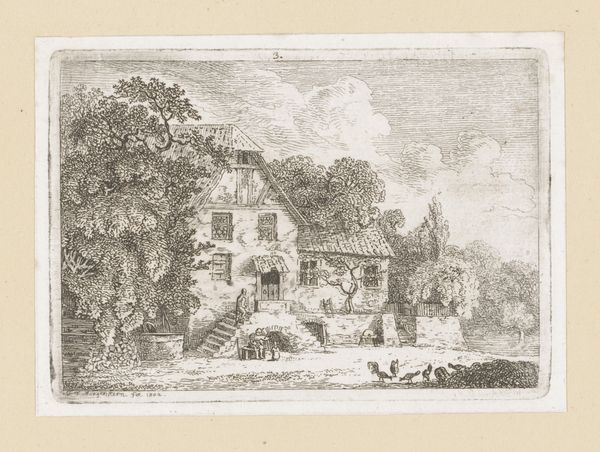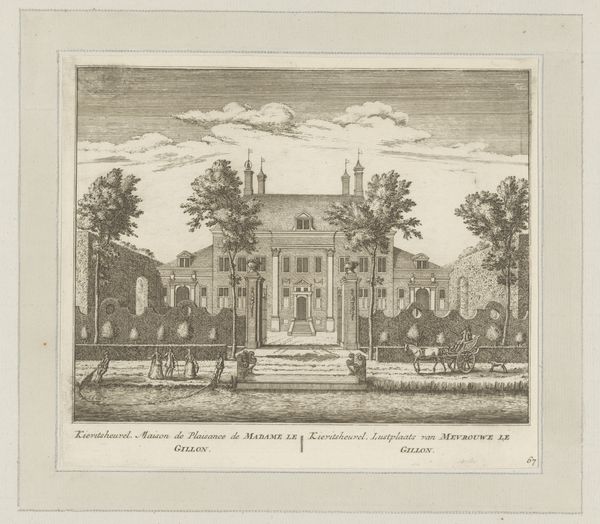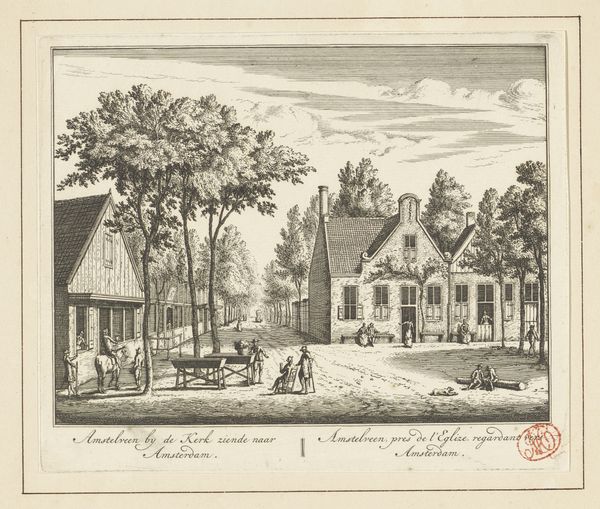
Gezicht op de Hofstede van de heer van Hoorn, op de weg naar Sloten c. 1730
0:00
0:00
print, etching
#
baroque
#
dutch-golden-age
# print
#
etching
#
landscape
#
cityscape
Dimensions: height 131 mm, width 185 mm
Copyright: Rijks Museum: Open Domain
Curator: Here we have Abraham Rademaker’s etching from around 1730, “View of the Estate of Mr. van Hoorn, on the Road to Sloten." Editor: It's such a meticulously crafted image, almost serene. The precise lines of the building and the ordered landscape create a sense of controlled wealth and privilege. But there's also a stillness, a quiet observation of daily life. Curator: Absolutely. Rademaker, working in the Dutch Golden Age tradition, meticulously documented these estates and landscapes, offering a glimpse into the power structures and social hierarchies of the time. The print serves as a form of social record, really. Editor: Right, but looking closer, I’m thinking about the workers depicted along the roadside – they become essential to understanding whose labour supports this scene of tranquility. It prompts questions about visibility, class, and the relationship between those who own the land and those who toil on it. How complicit were artists in perpetuating social divisions like this? Curator: That's a critical question, of course. These landscapes can be read as both documents of beauty and sites of potential exploitation. Artists operated within patronage systems that inevitably shaped their perspective. The figures included here do look like stock characters, rather than nuanced depictions. Editor: Precisely. Even in the way the scene is composed, the estate is placed centrally while the marginalized are positioned in the peripheries. Considering how the visual arts participated in maintaining specific power dynamics within society remains essential. Curator: The artist uses etching masterfully, wouldn't you say? Look at the contrast, how he evokes a full range of tones and textures in simple black and white. It's like looking at a photograph despite being created almost 300 years ago. Editor: Yes, this level of artistry requires us to think critically about what values were centered, how this aesthetic of idealization might influence how such unequal societies were perceived, even idealized. It offers invaluable insights into the intersection of art, power, and representation. Curator: Definitely. Rademaker's print invites multiple interpretations and encourages a dialogue between the past and present. Editor: It makes me reflect on art’s continuing ability to reflect social values and biases that might endure, however subtly, in the visual field.
Comments
No comments
Be the first to comment and join the conversation on the ultimate creative platform.
